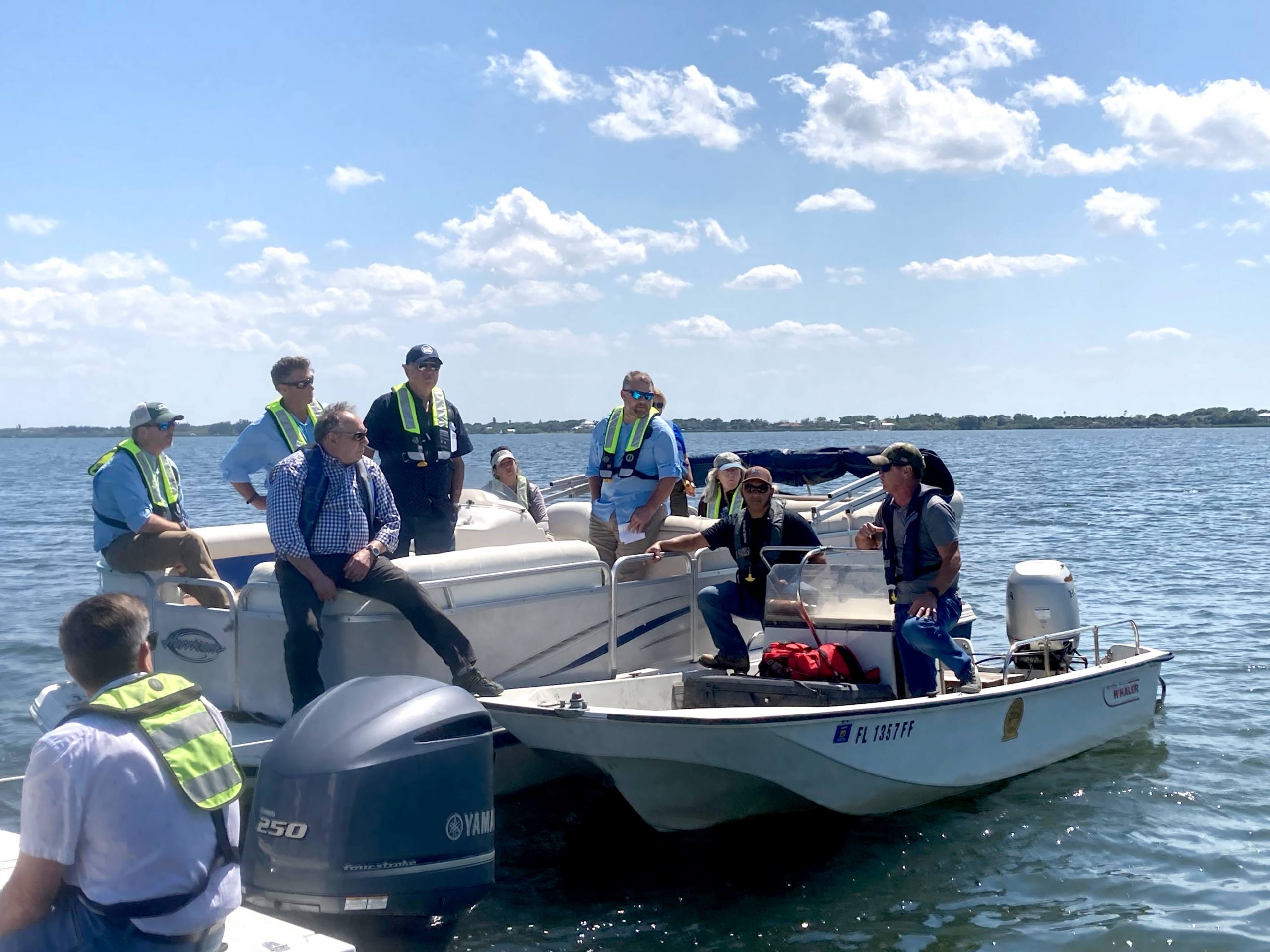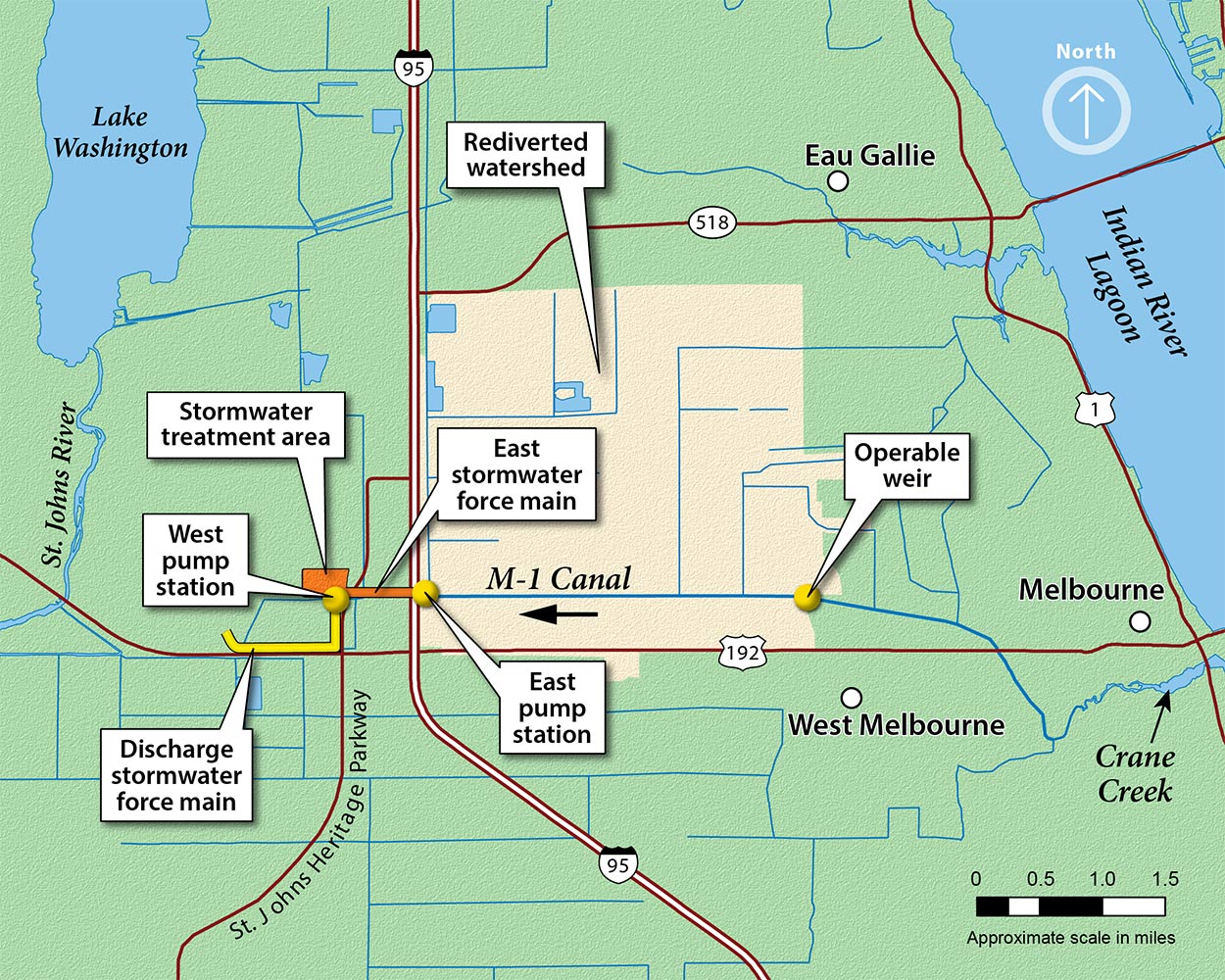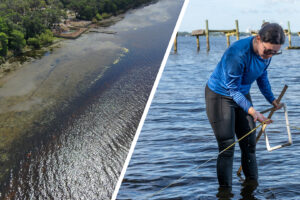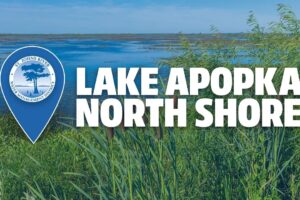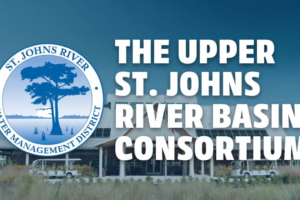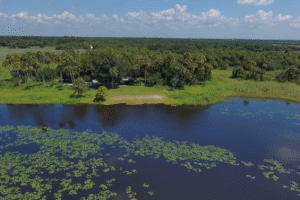District’s resiliency work continues and expands under new state law
Aug. 19, 2021
District Governing Board members, staff and Brevard Zoo officials visit the site where clams are being reintroduced to the lagoon through a cost-share grant.
You may have heard the use of the word “resiliency” as Florida and the nation look at the challenges of sea-level rise and work to address this issue in a collaborative way.
As part of the St. Johns River Water Management District’s core missions — water supply, water quality, flood protection and natural systems — we continue to support resiliency efforts and highlight state, regional and local resiliency projects. At the District Governing Board’s August meeting, staff provided an overview of some of the roughly 17 potential projects the District will propose in support of a new law established when Gov. Ron DeSantis signed Senate Bill 1954 in the 2021 legislative session.
Under the new state law, the Florida Department of Environmental Protection (DEP) will submit to the Legislature a resilience plan annually by Dec. 1 with ranked projects to address the risk of flooding and sea-level rise to coastal and inland communities. The District plans to submit projects to mitigate the risks of flooding or sea-level rise on water supplies or water resources by Sept. 1 to DEP for inclusion in its Statewide Flooding and Sea Level Rise Resilience Plan. These project proposals will include nature-based/green infrastructure and solutions, natural system enhancements, and flood resilience projects.
We’ve long supported resiliency initiatives by providing technical assistance to communities, land acquisition and preservation, restoration of wetlands and floodplains for floodwater storage, water quality monitoring and habitat mapping programs. In addition, the District has historically partnered on many critical resilience projects, including the Brevard County Oyster Reef Living Shoreline, the city of St. Augustine’s Davis Shores flood protection project and more recently the awarded Riverside Conservancy Living Shoreline. Additionally, the District is updating several of its hydrodynamic and water quality models to better predict potential changes due to climatic events, such as development of a density-dependent salinity groundwater model to better predict saltwater intrusion due to sea-level rise and groundwater withdraws and an improved flood forecasting tool for near real-time monitoring of water levels in the headwaters of the St. Johns River.
One resiliency project already in development is the Crane Creek M-1 Canal Flow Restoration Project, a partnership among the District, DEP and Brevard County to restore approximately 7 million gallons of flow per day from a 5,300-acre watershed, currently discharging to the lagoon, back to the St. Johns River following treatment in a stormwater treatment area. The project will reduce the amount of nutrients and freshwater sediment flowing to the Indian River Lagoon, as well as, increase freshwater flows to Lake Washington, the drinking water supply source for the city of Melbourne and other coastal communities. Water quality benefits include an estimated load reduction of 24,000 pounds of total nitrogen and 3,000 pounds of total phosphorus.
To learn more about ongoing District resiliency partnerships, visit www.sjrwmd.com/localgovernments/sea-level-rise.


